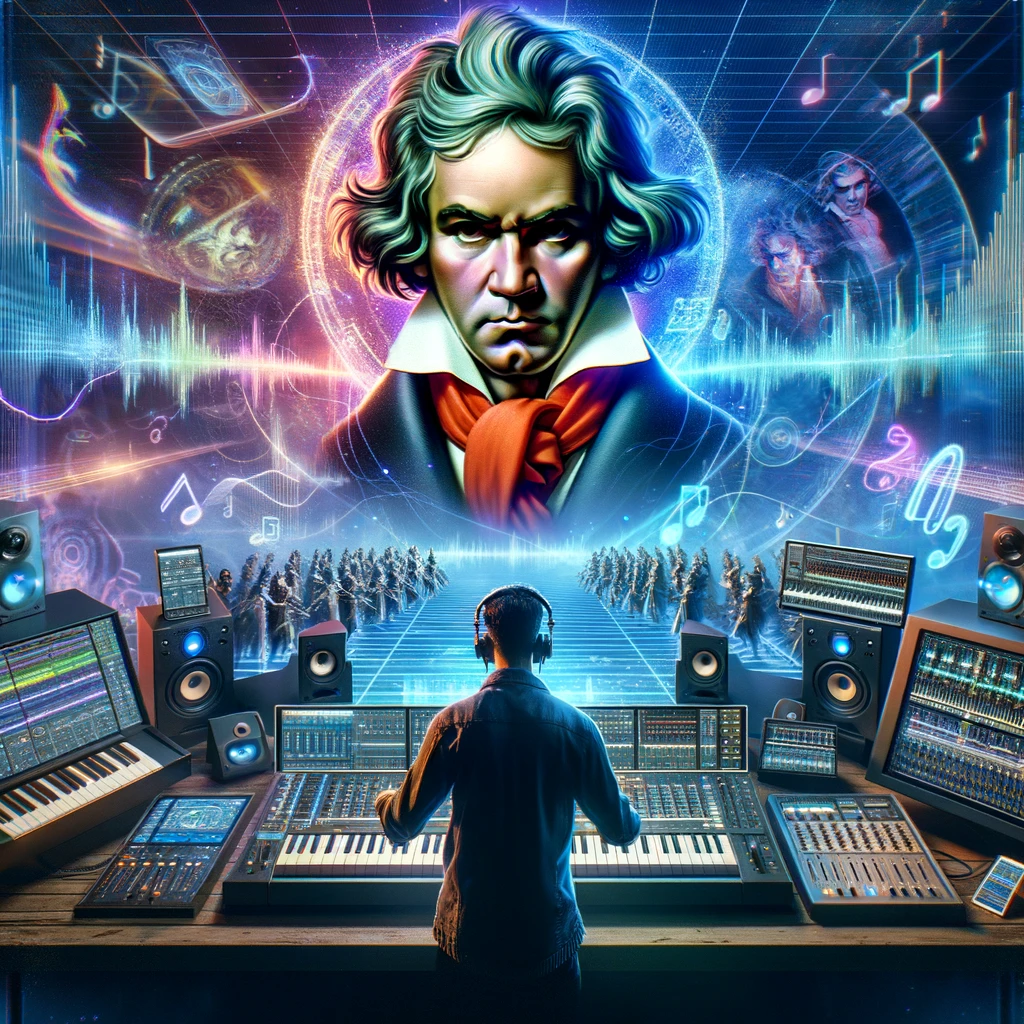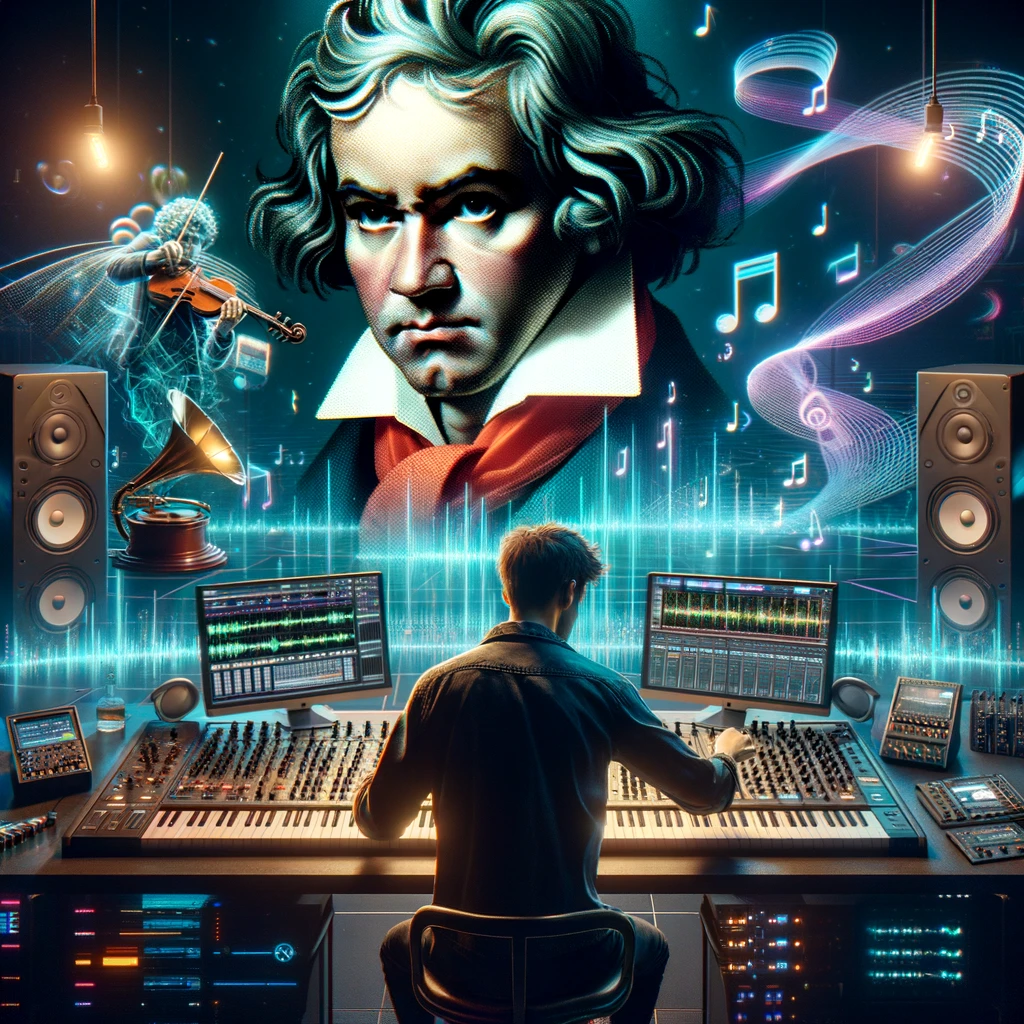
Beethoven Remixed: Electronic and Experimental Takes
Ludwig van Beethoven, a titan of classical music, has long transcended the boundaries of time and genre. His compositions, full of emotional depth and technical complexity, continue to resonate with audiences around the world. Today, Beethoven’s influence extends far beyond classical music; his works are being reinterpreted in electronic and experimental music genres, breathing new life into these classical compositions.
The Timeless Appeal of Beethoven
Before diving into his modern reinterpretations, it’s important to understand why Beethoven’s music has such a lasting appeal. Beethoven was a master of emotion, weaving despair, joy, anger, and tranquility into his compositions. This emotional diversity makes his music a perfect candidate for reinterpretation in genres that thrive on emotional expression, like electronic music.
Beethoven Goes Electronic
Electronic music, known for its use of synthesized sounds and digital effects, might seem worlds away from the acoustic richness of Beethoven’s era. However, the core of electronic music—its capacity to evoke emotion through innovative soundscapes—aligns closely with Beethoven’s artistic intentions. Modern musicians and producers have tapped into this potential, remixing Beethoven’s work to fit the electronic and experimental music scene.
Popular Beethoven Tracks in Electronic Music
- Moonlight Sonata (Electronica Version): One of the most famous piano sonatas by Beethoven, the “Moonlight Sonata,” has been transformed into a haunting electronic track. The slow, somber first movement is a natural fit for ambient electronic interpretations, where its melancholic themes are enhanced by deep bass and synthesized melodies.
- Fifth Symphony (Trance Remix): Beethoven’s Fifth Symphony, particularly the iconic four-note motif, has found new life in the high-energy world of trance music. The symphony’s dynamic progression and dramatic crescendos lend themselves well to trance remixes, where they’re used to build up intense, dance-floor-ready climaxes.
- Für Elise (Downtempo Electronica): “Für Elise,” one of Beethoven’s most beloved pieces, has been reimagined in a downtempo electronica style. The familiar melody is overlaid with electronic beats and futuristic sounds, creating a chill, lounge-worthy version that contrasts with the original’s classical purity.
Experimental Avenues
Beyond mainstream electronic genres, Beethoven’s compositions are also being explored in more avant-garde and experimental contexts. These interpretations often focus on deconstructing and reconstructing Beethoven’s themes to create entirely new musical experiences.
Examples of Experimental Interpretations
- Symphony No. 9 (Ambient Industrial Cover): An industrial music artist might take the “Ode to Joy” from Beethoven’s Ninth Symphony and layer it with industrial noise, electronic drones, and distorted vocals, transforming it into a powerful commentary on modern society.
- Pathétique Sonata (Noise Music Version): The emotional depth of Beethoven’s “Pathétique” Sonata can be amplified in a noise music adaptation, where its melodic lines are interspersed with abrasive sound textures, challenging listeners to find beauty amidst chaos.
The Impact on New Audiences
These modern interpretations of Beethoven’s music do more than just showcase the versatility of his compositions—they also introduce his genius to new audiences. Young listeners who might not attend a classical concert could discover Beethoven through a streaming playlist of electronic music, potentially sparking an interest in both his original works and classical music as a whole.
The Future of Classical Remixes
As technology continues to evolve, so too will the ways in which Beethoven’s music is reimagined. Artists are beginning to use AI and machine learning to create even more innovative remixes of classical music. These technologies can analyze Beethoven’s compositions to generate new pieces that maintain his style, or blend his motifs with contemporary sounds in ways previously unimaginable.
Ludwig van Beethoven’s music has proven to be endlessly adaptable, resonating with listeners not just in concert halls but also through headphones blasting electronic beats. The marriage of classical and electronic music highlights the timeless nature of Beethoven’s work and its ability to inspire creativity across musical boundaries. As we continue to witness these fascinating fusions, one thing remains clear: Beethoven’s legacy in music is as alive and kicking as ever.
This is just the beginning of exploring Beethoven’s impact in electronic and experimental music. If you’re intrigued by the innovative ways his music is being transformed, stay tuned. The journey through Beethoven’s remixes is an ongoing symphony of past and present, classic and modern.

In this modern musical landscape, the potential for more daring and diverse interpretations of Beethoven’s work is immense. As musicians and producers continue to experiment with Beethoven’s rich catalog, we can anticipate even more boundary-pushing projects that challenge our traditional perceptions of classical music.
Bridging Genres and Generations
The fusion of Beethoven’s music with electronic and experimental genres is not just an artistic endeavor; it serves as a bridge between generations and musical traditions. By incorporating classical motifs into contemporary music, artists are creating a hybrid genre that appeals to a broad audience. This cross-generational bridge not only enhances the appreciation of Beethoven’s work but also invigorates the classical music genre with fresh, dynamic energy.
Educational Opportunities
These modern renditions of Beethoven’s compositions also offer unique educational opportunities. Music educators are beginning to use these remixes as tools to engage students, demonstrating how classical music can be both historical and hip. For instance, a high school music teacher might use an electronic remix of the “Fifth Symphony” to illustrate musical concepts such as motif, dynamics, and structure, while also discussing the technology behind electronic music production.
Challenges and Criticisms
While many celebrate the innovative reinterpretation of Beethoven’s music, these remixes are not without their critics. Purists argue that electronic interpretations can oversimplify or distort the complexities of Beethoven’s original compositions. Others express concerns that the essence of the music might be lost in translation, with the emotional depth and acoustic nuances of classical music being overshadowed by electronic beats and synthetic textures.
However, proponents counter these criticisms by highlighting the importance of artistic evolution and cultural relevance. They argue that remixing Beethoven’s work in new musical styles can actually deepen listeners’ understanding and appreciation of his music by presenting it in forms that resonate with contemporary audiences.
Notable Collaborations and Projects
Several notable projects have exemplified the successful integration of Beethoven’s music into modern genres. For example, a renowned DJ collaborated with a classical orchestra to perform a live electronic-orchestral hybrid of Beethoven’s “Seventh Symphony.” This performance was not only a hit in concert halls but also received acclaim for its innovative approach to classical music.
Online platforms and music festivals have also played significant roles in promoting these innovative mixes. Special events dedicated to classical-electronic music showcase how Beethoven’s works can thrive in modern musical environments. These platforms provide artists with the opportunity to experiment and audiences to experience Beethoven like never before.
Looking Ahead
The future of Beethoven’s music in electronic and experimental genres looks promising. With advancements in music technology and growing interest in genre-blending, Beethoven’s compositions will likely continue to inspire artists around the globe. Whether through an ambient techno version of the “Pastoral Symphony” or a minimalist electronic reinterpretation of “Fidelio,” the possibilities for creative innovation are limitless.
Conclusion
Beethoven remixed might seem like a modern phenomenon, but it is deeply rooted in the composer’s own innovative spirit. Beethoven himself was a revolutionary artist who constantly pushed the boundaries of music during his time. Today’s electronic and experimental interpretations are simply contemporary extensions of his pioneering spirit. As we celebrate the fusion of classical and modern, we not only preserve Beethoven’s legacy but also ensure its relevance for future generations, proving that great music truly knows no bounds.